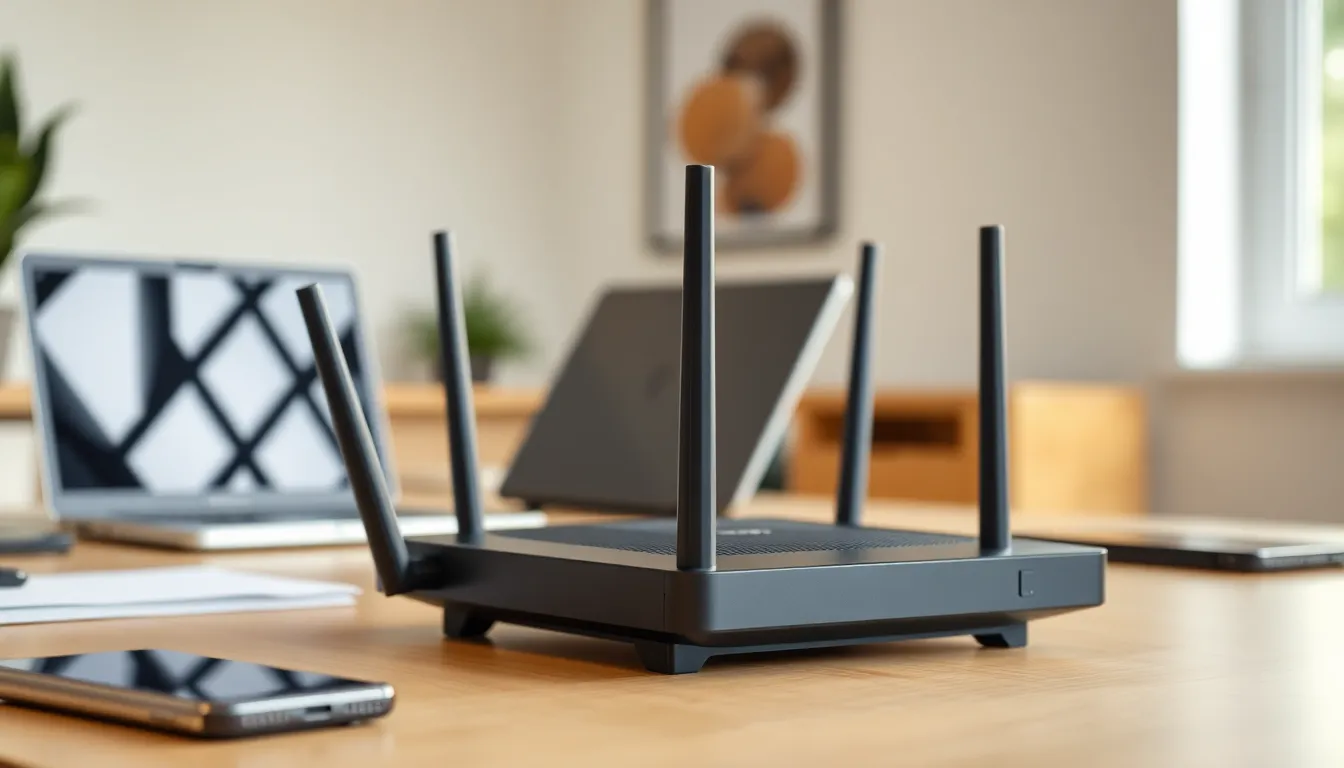In today’s fast-paced digital world, effective wireless channel selection is crucial for optimizing network performance. With the increasing number of devices connecting to Wi-Fi networks, choosing the right channel can significantly enhance connectivity and reduce interference. This process involves analyzing available channels and selecting the one that offers the best signal quality and speed.
Wireless channel selection isn’t just a technical necessity; it’s a game-changer for both home users and businesses. By understanding the dynamics of channel interference and the tools available for analysis, users can ensure a smoother online experience. Whether streaming videos, gaming, or handling business communications, the right channel makes all the difference in maintaining a reliable connection.
Understanding Wireless Channel Selection
Wireless channel selection plays a crucial role in optimizing network performance and reducing interference. This process is vital for ensuring reliable connectivity for various applications, from streaming to business communications.
Importance of Channel Selection
Channel selection significantly impacts network speed and stability. Choosing the right channel can reduce congestion and improve data transfer rates. In crowded environments, such as offices or apartment buildings, thoughtful channel selection minimizes interference from neighboring networks. For example, operating on channels 1, 6, or 11 in the 2.4 GHz band can allow for well-spaced frequency usage, enhancing overall network efficiency.
Factors Influencing Channel Selection
Several factors influence effective channel selection. These include:
- Device Density: Increased numbers of devices lead to higher interference levels. In high-density areas, selecting less utilized channels becomes crucial.
- Frequency Band: Different bands, such as 2.4 GHz and 5 GHz, have distinct characteristics. The 5 GHz band offers more channels and reduced interference but has a shorter range compared to the 2.4 GHz band.
- Interference Sources: Identifying potential sources of interference, such as microwaves or cordless phones, aids in channel selection. Channels that are less impacted by these devices provide better performance.
- Dynamic Spectrum Usage: Analyzing current channel usage through tools helps identify optimal channels. Real-time monitoring allows for adjustments based on network conditions.
- Geographic Considerations: Environmental factors, such as walls and other obstructions, affect signal strength and quality. Understanding the layout aids in choosing channels that maintain performance across distances.
By considering these factors, users can enhance their wireless network’s efficiency and reliability.
Techniques for Wireless Channel Selection

Effective wireless channel selection involves both static and dynamic techniques to optimize network performance and reduce interference. Understanding these methods equips users with the tools needed to enhance their connectivity.
Static Channel Selection
Static channel selection involves manually assigning a specific channel for network use. This method allows users to choose a channel based on predefined criteria, such as:
- Frequency Band: Users can select channels in the 2.4 GHz and 5 GHz bands, each offering different ranges and speeds.
- Signal Interference: Users analyze the surrounding environment to avoid channels heavily utilized by neighboring networks.
- Device Compatibility: Users consider the capabilities of devices connecting to the network, ensuring selected channels are compatible with all devices.
Static selection is best suited for environments with stable network demands where interference levels are predictable.
Dynamic Channel Selection
Dynamic channel selection automates the process of selecting the optimal channel based on real-time conditions. This approach includes the following key techniques:
- Automatic Frequency Selection (AFS): Devices automatically scan available channels and switch to the least congested option.
- Interference Detection: Devices identify interference sources and adjust channels accordingly, reducing the impact on performance.
- Load Balancing: Networks distribute traffic evenly across channels, ensuring that no single channel becomes a bottleneck.
Dynamic selection enhances network performance, particularly in environments with fluctuating device counts and varying interference patterns. It allows for a more adaptive response to changing network conditions.
Challenges in Wireless Channel Selection
Wireless channel selection faces several challenges that impact network performance and reliability. Understanding these challenges is essential for optimizing connectivity in various environments.
Interference and Noise
Interference and noise significantly disrupt wireless signals. Physical obstacles, including walls and furniture, weaken signal strength. Other wireless devices, such as microwaves, cordless phones, and neighboring Wi-Fi networks, contribute to interference also. This interference creates overlapping channels that degrade signal quality. For example, in the 2.4 GHz frequency band, channels 1, 6, and 11 are non-overlapping, but using adjacent channels leads to severe interference. Identifying and mitigating sources of interference ensures more stable connections and improved network performance.
Scalability Issues
Scalability issues arise as the number of connected devices increases. With more devices competing for bandwidth, channel selection becomes critical. Static channel configurations may not adapt well in high-density environments, leading to congestion. For instance, multiple access points may inadvertently operate on the same or overlapping channels, causing significant signal degradation. Dynamic channel selection methods, which adjust based on real-time data and device activity, are necessary for maintaining optimal performance in rapidly changing environments. Adopting effective scalability strategies enhances user experiences and supports diverse applications in both residential and commercial settings.
Future Trends in Wireless Channel Selection
Emerging technologies significantly influence wireless channel selection, shaping future strategies to optimize connectivity. Innovations in artificial intelligence (AI) and machine learning (ML) enable more effective channel management and standardization efforts enhance overall network reliability.
AI and Machine Learning Applications
AI and ML applications revolutionize wireless channel selection by automating real-time analysis of network conditions. These technologies enable systems to predict interference and congestion patterns, allowing networks to adapt dynamically based on current conditions. For instance, AI algorithms analyze data traffic to optimize channel assignment across numerous access points, improving overall performance. As these technologies evolve, their integration into wireless management tools will facilitate self-healing networks, where adjustments occur automatically to maintain optimal connections.
Standardization Efforts
Standardization efforts play a crucial role in enhancing wireless channel selection efficacy. Organizations like the Institute of Electrical and Electronics Engineers (IEEE) work towards establishing common protocols that govern channel allocation and interference management. These initiatives aim to streamline how devices communicate and share bandwidth, ensuring compatibility across different manufacturers. Implementing standardized frameworks enables smoother integration of emerging technologies and fosters a more cohesive approach to wireless networking. Moreover, as new frequency bands, such as the 6 GHz band, become available through standardization, they present additional opportunities for channel selection optimization in congested environments.
Effective wireless channel selection is vital for ensuring optimal network performance in a world filled with connected devices. By understanding the nuances of both static and dynamic selection methods, users can significantly enhance their connectivity experience.
As technology continues to evolve, leveraging advancements like AI and ML will become increasingly important for real-time adjustments and improved network management.
Staying informed about trends and best practices in wireless channel selection not only leads to smoother online experiences but also positions users to adapt to future challenges in connectivity. Ultimately, a well-chosen channel can make all the difference in achieving reliable and efficient wireless communication.





